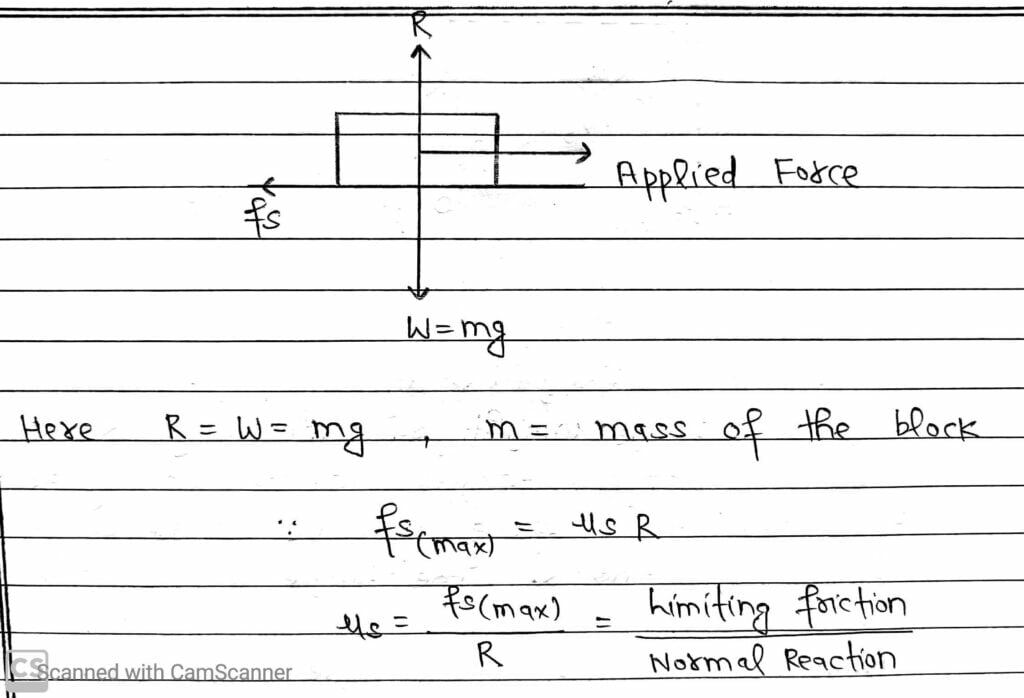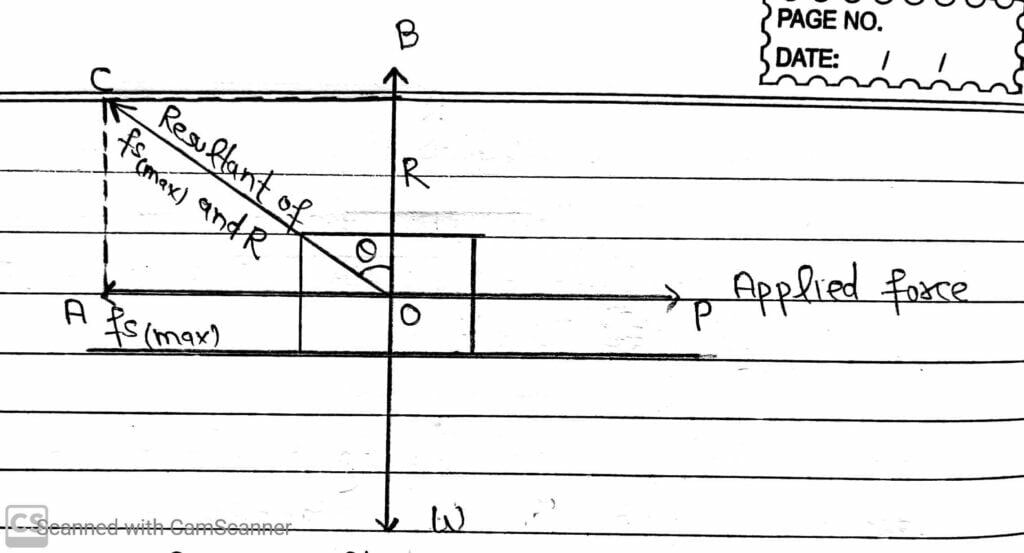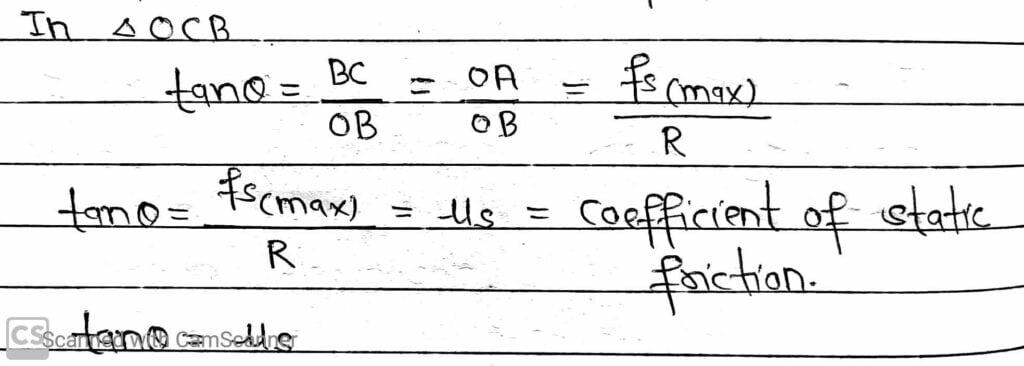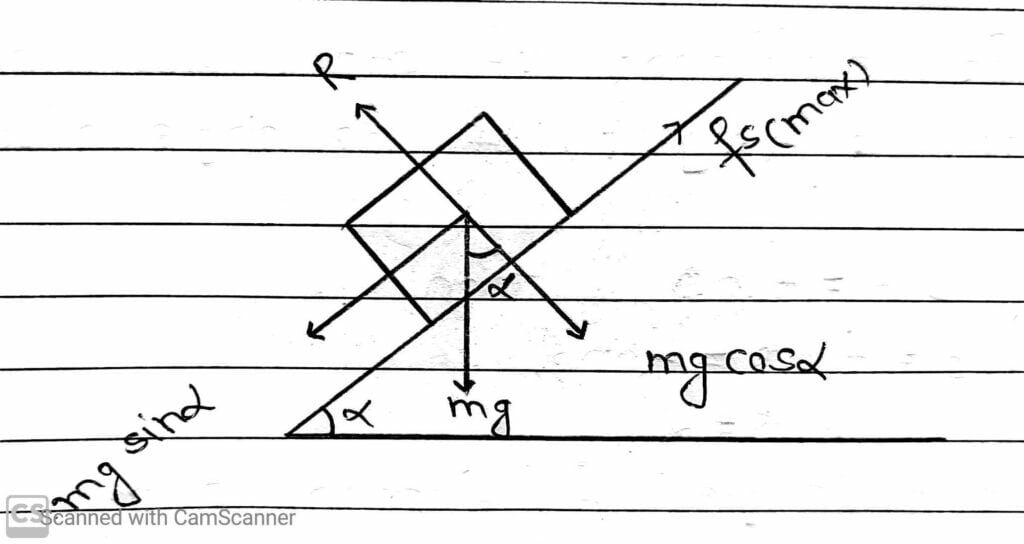Whenever a body moves or tends to move over the surface of another body, a force comes into play which acts parallel to the surface of contact and opposes the relative motion. This opposing force is called friction.
Let a wooden block place on a horizontal surface and give it a gentle push. The block slides through a small distance and comes to rest, then according to Newton’s Second Law, a retarding force must be acting on the block. This retarding force or opposing force is called friction or friction force.

Types Of Friction
There are mainly two types of friction.
1. Internal Friction
2. External Friction
1. Internal Friction
Internal friction arises on account of relative motion between two layers of liquid. Internal friction is also referred as viscosity of liquid.
2. External Friction
It arises when two bodies in contact with each other try to move or there is an actual relative motion between the two bodies. This external friction is also called contact friction.
External friction are three types.
(I) Static Friction
(II) Limiting Friction
(III) Kinetic Friction
(I) Static Friction
The force of friction which comes into play between two bodies actually starts moving over the other is called static friction.

Therefore, static friction opposes the impending motion. The static friction does not exist by itself. When there is no applied force, there is no static friction. So, it is a self adjusting force.
(II) Limiting Friction
As we increase the applied force on the block, static friction (fs) also increases to balanced the applied force and the block does not move.
Once the applied force is increased beyond a certain limit, the block just begin to move. At this stage static friction is maximum.

The maximum force of static friction which comes into play when a body just starts move over the surface of another body is called limiting friction.

There are four laws of limiting friction such as
(a) The value of limiting friction depends upon the nature of two surface in contact.
(b) The force of limiting friction is tangential to the two surfaces in contact.
(c) The value of limiting friction is independent of the area of the surface in contact. So long as the normal reaction remains the same.
(d) The value of between two given surfaces is directly proportional to the normal reaction (R) between the two surfaces.


Thus, the coefficient of static friction is defined as the ratio of limiting friction to the normal reaction.
Angle Of Friction
The angle of friction may be defined as the angle which the resultant of the limiting friction and the normal reaction makes with the normal reaction.
The value of angle of friction depends on the nature of materials of the surfaces in contact and the nature of the surface (smooth or rough).

Let w is the weight of the body, R is the normal reaction, fs(max) is the limiting friction, P is the applied force and OC is the resultant of fs(max) and R. The angle θ between the normal reaction R and the resultant OC.
Then by definition the angle of friction,

Thus, the coefficient of static friction is equal to the tangent of the angle of friction.
Angle Of Repose
Angle of repose is defined as the minimum angle of inclination of a plane with the horizontal, such that a body placed on the plane just begin to slide down the incline.
It is represented by α and its value depends on material and nature of the surface in contact.
Let a body of mass m placed on an inclined plane. The angle of inclination α of the inclined is so adjusted that a body placed on it just begins to slide down.

(a) The weight mg of the body acting downward.
(b) The limiting friction fs(max) acting along the inclined plane in the upward direction. It balances the component mgSinα of the weight mg perpendicular to the inclined plane. Thus,
fs(max) = mgSinα – (I)
(c) The normal reaction R acting at right angle to the inclined plane in the upward direction. It balances the weight mgCosα of the weight mg perpendicular to the inclined plane. Thus,


Thus, the angle of friction is equal to the angle of repose.
(III) Kinetic Friction
When we increase the applied force slightly beyond limiting friction, the actual motion starts and force of friction decreases. This means that the applied force is now greater than the force of limiting friction. The force of friction at this stage is called kinetic friction. It’s value is actually a little bit less than the value of limiting friction.
There are four laws of kinetic friction
(a) The kinetic friction opposes the relative motion and has a constant value which depends on the nature of two surface in contact.
(b) The value of kinetic friction fk is independent of the area of contact, so long as the normal reaction remains the same.
(c) The kinetic friction does not depend on velocity.
(d) The value of kinetic friction fk is directly proportional to the normal reaction R between the two surfaces.

Types Of Kinetic Friction
(a) Sliding Friction: The force of friction that comes into play when a body slides over the surface of another body is called sliding friction.
Example: A block moves over the flat surface.
(b) Rolling Friction: The force of friction that comes into play when a body rolls over the surface of another body is called rolling friction.
Example: When a wheel, circular disc or a ring or or a sphere or a cylinder roll over a surface.
Way For Reducing Friction
The various ways of reducing friction are
(a) Lubrication
(b) Polishing
(c) Ball bearing
(d) Streamlining
NCERT Class 11 Physics Book PDF Free Download
Also Read
SL Arora Class 11 Physics Book PDF Free Download
All In One Arihant Class 11 Physics Book PDF Free Download
Arihant All In One Chemistry Class 11 Book PDF Free Download
NCERT Class 11 Physics Hand Written Notes Chapter-Wise
Chapter-1 (Physical World) PDF Free Download
Chapter-2 (Units and Measurement) PDF Free Download
Chapter-3 (Motion In A Straight Line) PDF Free Download
